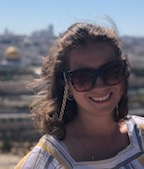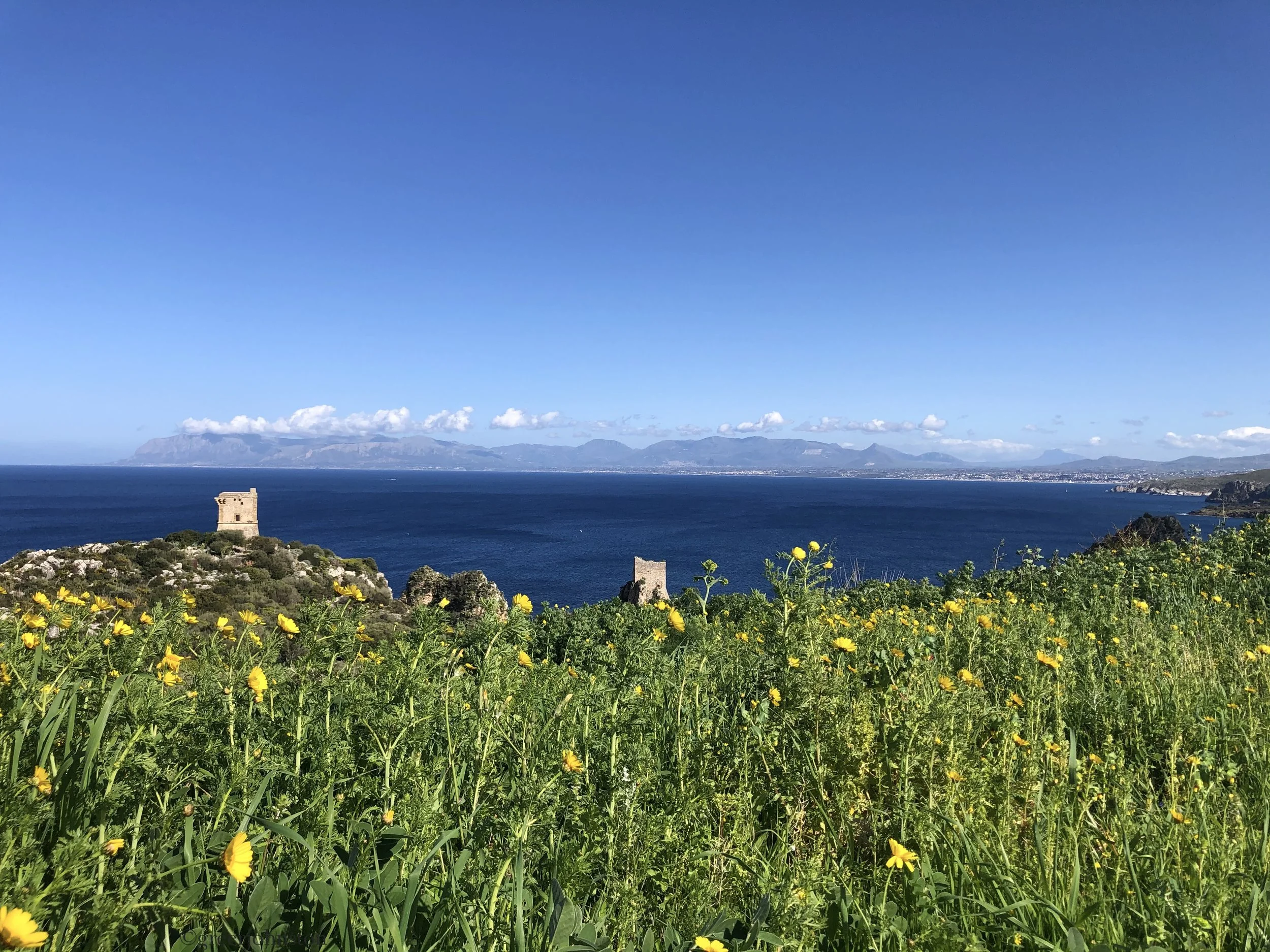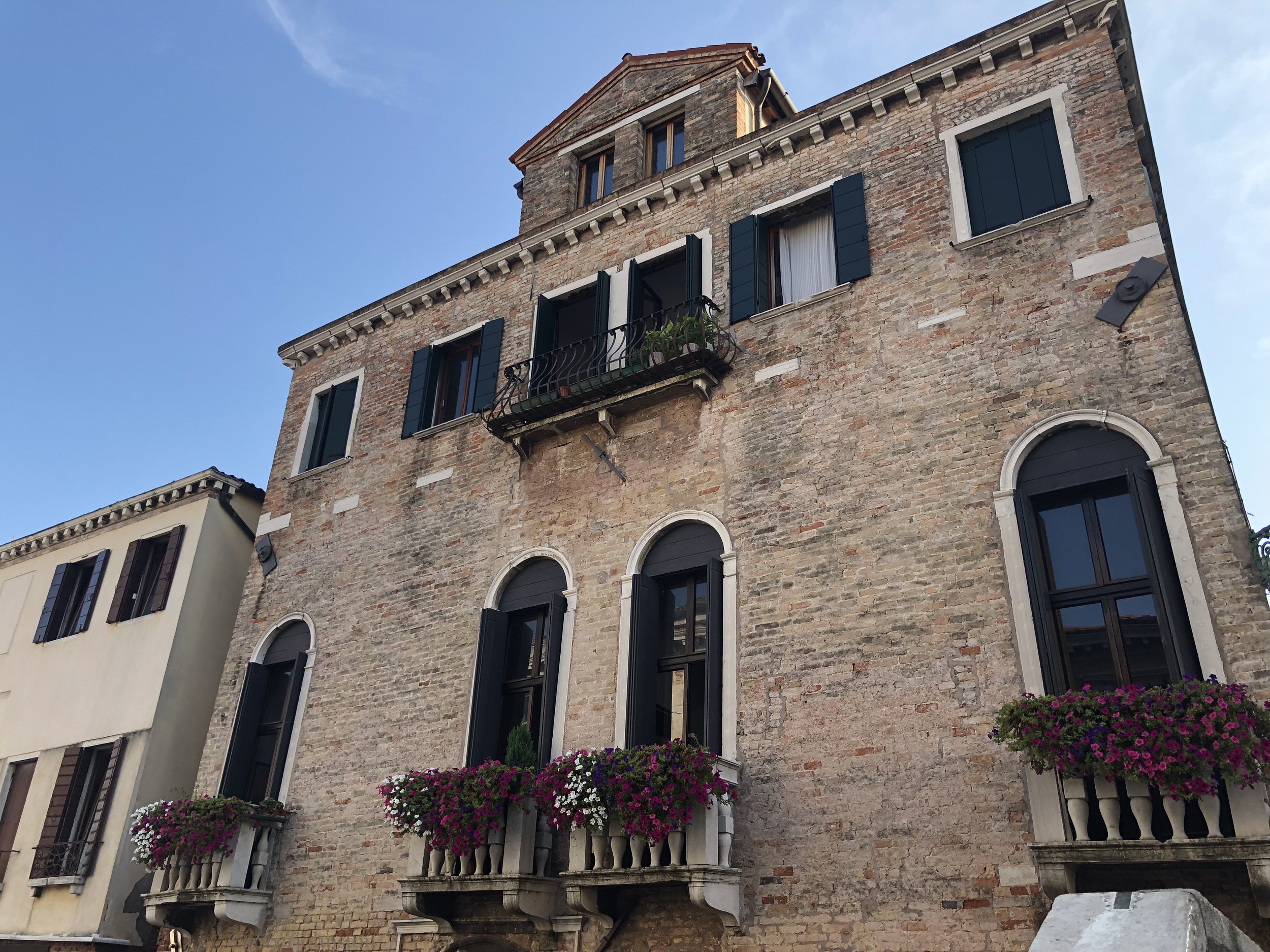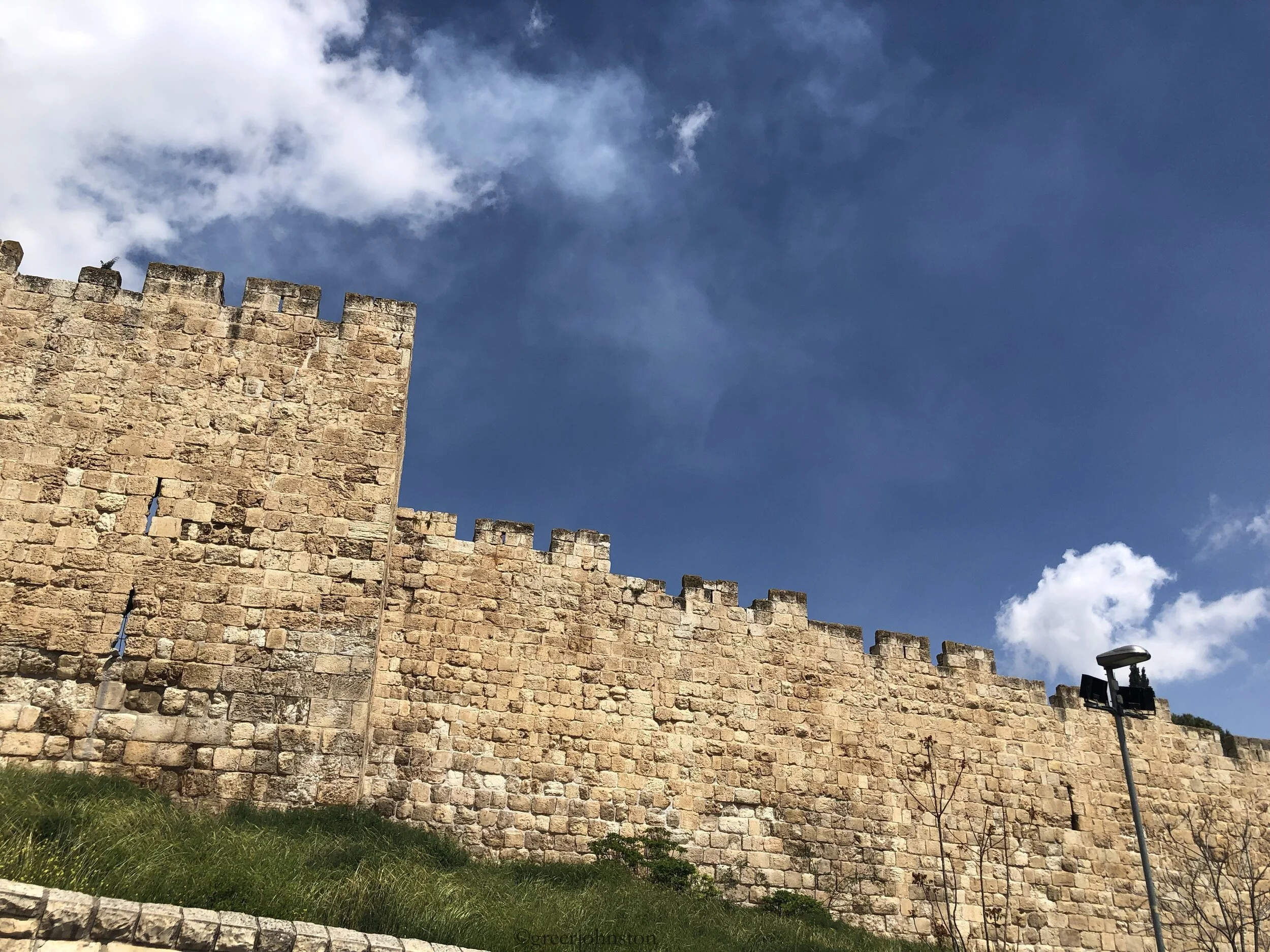Bethlehem
A graffiti from the separation wall that struck me. It features the kuffiyeh and tatreez, two important aspects of Palestinian culture
During my time in Palestine, it would always blow me away how I was visiting places that before had been like something mythical. I couldn’t believe I was walking around these places that were sung about in Christmas carols. What’s more, I was astonished that they were cities just like any other city. There were people going to work, going to school, enjoying a coffee at a local café and watching the passers-by. It was a surreal feeling, when something you’ve imagined “comes to life” right in front of you. But of course, its always been there: living, breathing, bustling, for centuries.
That is how I felt sitting in a hostel in Jerusalem, planning to visit Bethlehem the next day with a girl I met. We visited Bethlehem on our own using public transportation. While I have only had a small taste of Bethlehem, I hope this article and these pictures can help bring it to life for you.
I visited Bethlehem over four years ago, and I while I will share the way we traveled there, PLEASE do your own research as bus numbers and logistical information may have changed.
Lots of hills in Bethlehem
We first took Bus 231 from the Damascus Gate bus station, which took us through a checkpoint and into Bethlehem itself. We simply followed the app (I believe it was Moovit), and got off at the stop it told us to. We then had to walk a little bit, about 20 minutes to our first stop, and just a warning, Bethlehem is hilly!
If you have any questions about the bus, coming or going, just know that Palestinians are really friendly and you can always ask someone for directions. I’ve always been able to find someone to help me and reassure me that I’m going the right way. Or to tell me I’m definitely not going the right way and where I should go instead.
The courtyard at the Church of the Navity
Our first stop was the Church of the Nativity, located inside a small courtyard that is lovely and peaceful. The church itself has some nice mosaics scattered on the walls and lanterns strung from the ceiling. The main treasure is located in a small area downstairs, supposedly over the site where Jesus was born. When we visited, the church was not crowded at all. We did not have to rush, and got to spend a few minutes in the small room in prayer and meditation.
However, when I came back again on a tour one day, it was insanely crowded with large tour groups, as one can imagine. Unfortunately, many people were also quite rude, pushing and pressuring people to hurry up so they could have their turn. This was so upsetting to see, for so many reasons.
Inside the Church of the Nativity
After our time at the church, we headed to a local shop across the street for an ice cream and to take in the view of the countryside. I took a very cute picture totally unaware to the fact that the row of apartments nearby was actually a settlement. We then took a short walk to see the Chapel of the Milk Grotto, a small church and shrine.
Here you can see how close the settlement (the clustered group of buildings) is to Bethlehem
Then, it was time to head to the other attraction that, unfortunately, has come to be what visitors come to Bethlehem to see: the separation wall. Built in 2003, the wall creates an enclave around the Aida Refugee Camp and Bethlehem, separating them from nearby territories.
Here you can clearly see how the wall just cuts through the community
This portion of the wall has become notorious for its graffiti and decoration, including from noted artists such as Banksy. Banksy also established the Walled-Off Hotel, which is open to visitors and includes works by the artist and a small museum featuring the works of others upstairs.
A sign on the separation wall explaining the history of Aida Refugee Camp
While we were observing the different graffiti, we were approached by someone who offered to give us a tour through the Aida Camp. While I don’t usually walk off with strangers, we decided it was a good opportunity to see something important, something that most visitors who come to Bethlehem don’t see. They may see the wall, and take some pictures, but I don’t think, unfortunately, that too many people make a deeper interrogation into why this wall is here, who it is intended to separate, and the impact that it has on people’s lives.
The gate to Aida Refugee Camp
The gate to Aida Camp is in the shape of a keyhole, with an large key on top. The key is an important symbol of the Palestinian story, and of their right to return. When Palestinians were forced out of their homes during the 1948 Nakba, many took the keys to their homes with them, believing they would return after a few days or weeks. However, they were never allowed to return, and many ended up in refugee camps. The keys to their homes were subsequently passed down through generations, a reminder of the homes they are still waiting to return to.
Walking through a checkpoint
As it was time to return to Jerusalem, my travel partner and I looked up how to get back. The map app directed us to take the 234 bus, but we must have read the map wrong, because I now realize we were following the directions for cars. We began heading toward a checkpoint when a solider began shouting at us to turn back. I didn’t know at the time just how dangerous this interaction was. I was very confused, as I had never encountered a situation like this, and at the time I had very little knowledge of the situation there. We turned back, and a good Samaritan who witnessed this scene offered to let us in their car to drive us through the checkpoint.
The next time I came to Bethlehem, I knew better. There are separate checkpoints for those who will walk through, mazes of security lines and turnstiles, and only sometimes will someone be there to check your documents. Otherwise, it is just a great way to waste your time.
Candles at the Church of the Nativity
I did not have the opportunity to visit Bethlehem again on my latest trip to Palestine, but many people told me that is really a cool place, with cultural events, shops, and boutique hotels. Inshallah one day I can go back and check them out.
There are two considerations I want to leave here regarding my visit to Bethlehem. First, an advice for the buses. One time I took the bus to Bethlehem to visit nearby Beit Sahour. I thought I had taken the same bus I took the first time, which was pretty direct, about a 30-minute ride. However, I ended up going on a very long drive through the Jerusalem suburbs instead. Remember, you can always try to find someone who speaks English to ask for directions or to ensure you are on the right bus.
The famous “Amoured Dove” by Banksy
Secondly, about our interactions with strangers. I was with someone else, and we both trusted our instincts to go on this tour with the gentleman through the camp as well as to get in someone’s car to drive across the checkpoint. I am not sure that I would have done so alone. As always when you are traveling, trust your instincts and be aware of your surroundings.
I hope you’ve enjoyed this article about Bethlehem. Perhaps it was not what you were expecting to find. I hope that you’ve been able to have a deeper look into this place that many of us have heard of, but that so many of us do not know much about.
A cross lit up in Beit Sahour
Note: The header image was taken at the Church of the Nativity complex.


















